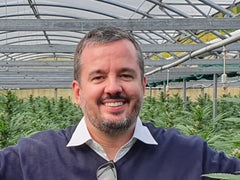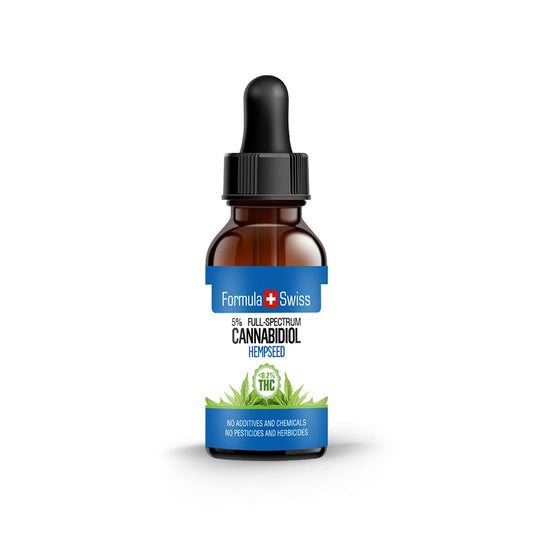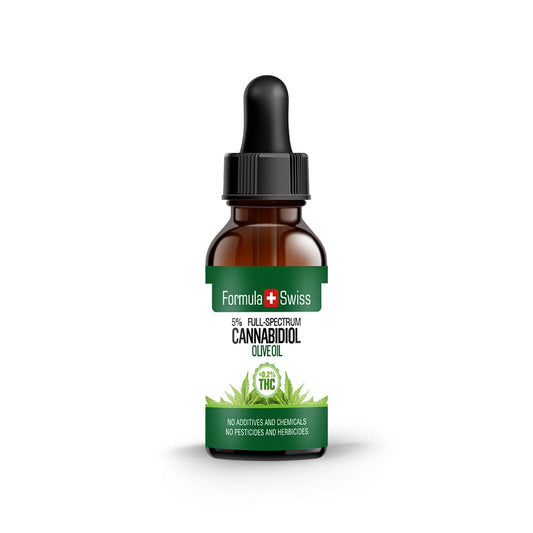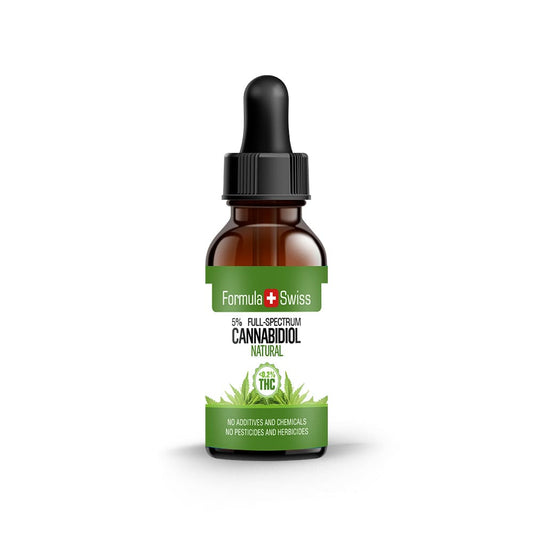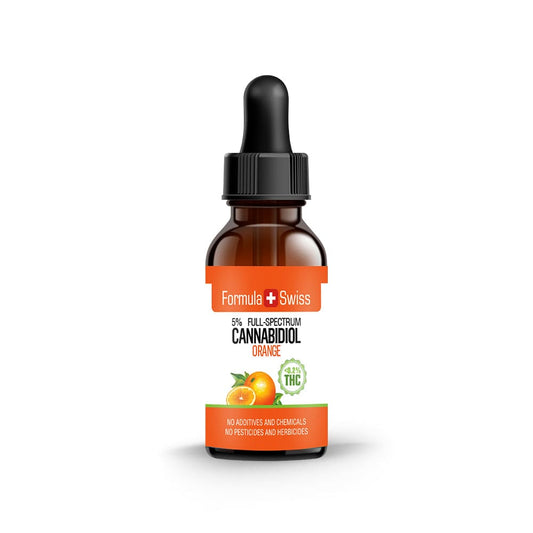There’s been a lot of conversation lately about sustainable farming and ethical growing practices. One question that keeps coming up is whether hemp can actually support more environmentally friendly agriculture. According to practical guides and long-term growers, this hardy crop might have a real role to play in making farming more resource-efficient. But what exactly is hemp, and how is it different from other crops?
After spending more than ten years in the cannabis space, I’ve seen hemp go from something niche to a more structured and properly regulated part of agriculture.
Known for growing quickly and having plenty of practical uses, hemp has been used for centuries to make textiles, paper, and food products from its seeds. Its link to cannabis has brought some challenges along the way, but the interest in hemp as a valuable and versatile plant is clearly on the rise.
Save up to 30% when you order your CBD oil today
Key takeaways
- Understanding hemp's background highlights its role in sustainable agriculture.
- Hemp requires fewer inputs than many traditional crops, supporting environmentally aware farming.
- This guide offers an overview of hemp’s growth cycle from planting to harvesting.
- Knowing hemp’s specific cultivation requirements supports successful yields and demonstrates its versatility.
This article is provided for informational purposes only and does not relate to any of the products available in our webshop. For more information, please see our full disclaimer.
The basics of hemp cultivation
Beginning hemp cultivation requires knowledge of sound farming practices and the broader considerations that influence how the crop is grown. This section covers key aspects of hemp cultivation, highlights how it differs from other forms of cannabis, and provides an overview of important factors to consider.

The hemp plant and its growth requirements
Hemp has specific environmental needs. It thrives in locations with full sun, moderate rainfall, and well-drained soil. Understanding these conditions is essential for selecting optimal planting locations and timing, which helps support successful harvests.
Practical considerations in hemp farming
Cultivating hemp involves navigating various factors that influence how the crop is grown and utilised. Only certain industrial hemp varieties are selected for cultivation, specifically those with minimal THC content. Growers must account for location, crop usage, and responsible management throughout the process.
Typically, the stalk and seeds are prioritised for processing due to their wide-ranging applications. Other parts of the plant, such as leaves and flowers, are often excluded from industrial use unless specific processes are in place.
Planning and organisation are essential for successful hemp farming, including careful site selection and ensuring the necessary resources and safeguards are established before starting operations.
Understanding the distinction between hemp and other cannabis types
Appreciating the differences between hemp and other forms of cannabis is important. Hemp contains significantly lower levels of THC and is primarily cultivated for industrial purposes, including fibre and oil production. These distinct characteristics influence cultivation methods and end-use applications.
| Feature | Hemp | Other cannabis varieties |
|---|---|---|
| THC content | < 0.3% | > 0.3% |
| Primary uses | Industrial (fibres, oils) | Medicinal/recreational |
| Growth conditions | Sunlight, moderate rainfall | Controlled environments |
Having a clear understanding of these distinctions helps stakeholders approach hemp cultivation and product development with accuracy and confidence.
Preparing for hemp cultivation
Successful hemp farming starts with strategic preparation. Key steps include selecting the right seed type and preparing the soil. When managed effectively, hemp can deliver high yields for a variety of applications.
Selecting the right seed varieties
Choosing the appropriate hemp seeds is essential and should align with intended outcomes. Whether the focus is on fibre, seed production, or cannabinoids, seed selection directly influences performance and final yield.
Soil types and preparation techniques
Hemp grows best in loamy, well-aerated soil with proper drainage. Incorporating organic matter and maintaining balanced pH levels can improve soil health and promote stronger yields. Careful soil preparation is a critical factor in early-stage planning.
Using crop rotation and cover cropping also improves the soil. These methods enhance soil health without relying on chemical inputs.

Effective hemp farming combines thoughtful seed selection with soil preparation. This strategy helps farmers use resources efficiently and support healthy, productive crops.
Order and enjoy up to 30% off your CBD oil purchase
Planting hemp seeds
Achieving successful hemp growth depends significantly on how seeds are planted. Understanding the best approach to planting is essential. This section explains when and how to plant hemp seeds to achieve optimal results.
Start by evaluating local climate conditions. Hemp requires specific temperature and light conditions. In temperate climates, early to mid-spring is typically the best planting window, avoiding late frosts and allowing seedlings to establish.
- Soil should be prepared several weeks before planting to ensure optimal structure and nutrient content.
- Loamy, well-aerated soil enriched with organic matter encourages strong root systems and overall plant health.
- Maintaining a pH range between 6.0 and 7.5 supports efficient nutrient uptake.
Seed depth and spacing are important. Seeds should be planted 1–2 cm deep and spaced to reduce the risk of disease and support robust growth.
Planting methods vary by scale. While small areas can be planted manually, larger areas benefit from mechanised sowing, which provides consistency and efficiency.
Mastering timing, soil readiness, and planting techniques helps cultivators optimise yield and quality.

Following these guidelines for planting supports a strong start to hemp cultivation and can contribute to favourable harvest outcomes.
Hemp growing stages and development
Understanding the full growth cycle of hemp—from seed to harvest—is essential for successful cultivation. This section outlines key developmental stages.
Germination and the seedling phase
Germination marks the beginning of plant development. Proper moisture, temperature, and light are required for successful germination.
The seedling phase follows germination, characterised by the emergence of the plant’s first true leaves. These support early-stage photosynthesis and growth.
Vegetative and flowering stages
During the vegetative stage, the plant focuses on developing leaves and stems. Adequate nutrients and water are necessary during this phase. As daylight hours shorten, the flowering stage begins, during which cannabinoid development takes place.
This phase requires careful monitoring to support proper flower formation and to manage potential environmental stressors.
Summary of vegetative and flowering stages:
| Stage | Duration | Key activities |
|---|---|---|
| Vegetative | 3–8 weeks | Leaf and stem development, nutrient input |
| Flowering | 6–12 weeks | Light control, pest prevention, cannabinoid monitoring |
Understanding each stage allows growers to manage the crop more effectively and align cultivation practices with developmental milestones.
Optimising hemp growth conditions
Hemp cultivation depends on several environmental and climatic factors. Adjusting these variables where possible supports higher yields and improves overall crop performance.
Climate and environmental factors in hemp farming
Although hemp is a hardy plant, growth outcomes vary depending on environmental conditions. Key factors include sunlight, temperature, and rainfall. Matching hemp varieties to local climates helps improve reliability and results.
- Farming in regions with favourable growing conditions can support improved outcomes and lower resource input.
- Hemp-based construction materials contribute to environmentally conscious building practices.
Irrigation and water management
Efficient irrigation plays an important role in hemp development. Hemp generally requires less water than many traditional crops, making it suitable for water-sensitive regions. However, timing and delivery methods are crucial to avoid stress and to use water responsibly.
Drip irrigation enhances water use efficiency by targeting the root zone directly. This helps maintain soil moisture levels while reducing waste, which supports healthy plant growth.
| Method | Benefits | Challenges |
|---|---|---|
| Drip irrigation | Water efficiency, direct root nourishment | Initial costs, maintenance |
| Sprinkler systems | Covers large fields, simulates rain | Higher water use, potential for runoff |
| Rain-fed | Low cost, minimal infrastructure | Relies on rainfall, variable distribution |
A study from the Journal of Agrometeorology highlights hemp’s water efficiency, particularly in fibre production, making it a relevant option as pressure on water resources increases due to climate variability.

Aligning environmental conditions with effective irrigation strategies supports sustainable hemp growth. Careful planning and modern techniques can help hemp farming address both production and environmental goals.
Order CBD oil now and save as much as 30%
The cultivation process of hemp
Understanding how hemp is cultivated is essential for those looking to follow a structured approach. The following overview explains the core steps in growing hemp, including the attention required at each phase.
- Selection of cultivars: Cultivation begins with selecting hemp varieties based on regional conditions and end-use goals.
- Soil preparation: Adjusting pH and enhancing nutrient levels in the soil helps support early plant development.
- Planting: Proper spacing allows for sufficient airflow and sunlight exposure, helping support healthy growth.
- Cultivation: Regular monitoring for pests, diseases, and nutrient status helps maintain strong plant health.
- Harvesting: The ideal harvesting window depends on intended use, such as for fibre, seeds, or cannabinoids.
- Processing: After harvesting, plants are typically dried and prepared for further applications, which may include fibre separation or cannabinoid extraction.
The table below provides an example of cannabinoid content in a hemp strain, illustrating the variation and complexity involved in hemp cultivation.
| Component | Percentage |
|---|---|
| THCa | 27.08% |
| Δ9-THC | 0.20% |
| CBDa | 0.10% |
| CBGa | 0.60% |
| CBG | 0.10% |
| CBC | 0.15% |
Factors like water availability and operational restrictions can have a significant impact on hemp cultivation. Promoting sustainable farming practices and improving water use planning are just as important as understanding plant biology.
Nutrient management in hemp farming
Proper nutrient management is essential for healthy hemp production, whether under organic or conventional systems. Understanding how to maintain balanced nutrient levels in the soil supports plant growth and yield.
Understanding soil nutrients and fertilisation
Hemp requires a balanced mix of nutrients for optimal development. Key elements such as nitrogen, phosphorus, and potassium play critical roles. Soil fertility directly affects plant vitality and final output.
Organic and conventional nutrient sources
Choosing between organic and conventional approaches impacts both the environment and the market position of hemp. Organic farming uses natural inputs like compost and manure, which help improve soil structure and microbial life. Conventional farming often uses synthetic fertilisers, which supply nutrients quickly but may negatively affect long-term soil health.
| Nutrient source | Type | Benefits | Drawbacks |
|---|---|---|---|
| Compost | Organic | Improves soil structure, increases microbial activity | Slower nutrient release |
| Manure | Organic | High nutrient content | Requires treatment to prevent contamination |
| Synthetic fertilisers | Conventional | Fast nutrient availability, precision in application | Potential soil degradation, environmental impact |
Selecting appropriate nutrient sources depends on farm objectives and soil conditions. Both methods have trade-offs, and understanding them supports responsible and effective cultivation.
Pest and disease control in hemp cultivation
Effective pest and disease control is vital for successful hemp farming. Integrated pest management (IPM) offers a comprehensive approach. It combines biological, cultural, mechanical, and chemical practices to manage threats in a sustainable way.

Monitoring crop health helps identify signs of disease or pest presence early. Common issues include discoloured leaves and infestations such as spider mites.
Integrated pest management for hemp
- Conduct regular field checks to identify early symptoms of infestation or disease.
- Adjust irrigation and nutrients during sensitive growth phases to minimise plant stress.
- Use crop rotation and sanitation to reduce pathogen build-up in the soil.
- Implement resistant strains and biological controls as part of an overall protection plan.
Identifying and controlling common diseases
Fungal pathogens often thrive in moist conditions and are among the most common challenges in hemp cultivation. Timely fungicide use and preventive hygiene practices can reduce disease pressure.
Prevention through sound agronomic practices—including proper spacing, clean handling, and environmental control—is key to maintaining healthy plants.
Hemp harvesting techniques
Harvesting is a critical step that varies depending on whether hemp is being grown for fibre, seed, or floral material. Timing and technique affect both quality and value.
For fibre, hemp is harvested at the beginning of flowering. Seed hemp is harvested when seeds mature and harden. Floral hemp is cut based on targeted cannabinoid levels.
- Fibre hemp: Harvested at flowering stage for optimal fibre content.
- Seed hemp: Harvested at full seed maturity, judged by colour and texture.
- Floral hemp: Harvested based on cannabinoid profile analysis and maturity indicators.
Using the correct tools and timing improves efficiency. Decorticators are often used for fibre, while specialised combines are used for harvesting seed hemp. Equipment choice supports quality preservation and ease of processing.
Understanding harvesting methods is essential for growers seeking consistent, high-standard output.
Post-harvest processing and drying of hemp
Post-harvest handling is vital in hemp processing. This stage helps preserve quality and prepare materials for further use, influencing product integrity and stability.
Methods for drying hemp plants
Drying reduces moisture content and helps stabilise cannabinoids and aromatic compounds. It should be done in a temperature- and humidity-controlled environment. A drying space set to 60–70°F (15–21°C) with 45–55% humidity is typically maintained for 3–7 days.

Curing hemp for optimal quality
After drying, curing involves storing hemp in sealed containers while allowing periodic airflow. This stabilises humidity and reduces residual sugars and chlorophyll. The process contributes to aromatic and chemical profile enhancement.
| Stage | Temperature | Humidity | Duration |
|---|---|---|---|
| Drying | 65-70°F | 50% RH | 3-7 days |
| Curing | Room temp. | N/A | 2-4 weeks |
Curing hemp carefully helps preserve quality and enhances its value. Controlled curing techniques assist producers in meeting high industry standards and maintaining compliance.
Tips for successful hemp cultivation
Beginning hemp cultivation demands careful planning and compliance with established agricultural practices. Understanding relevant guidelines is a fundamental part of the process.
Selecting the correct strain, planting at the right time, and harvesting properly all play a role in successful outcomes. It's also important to maintain records of soil conditions and inputs. Effective nutrient and pest management support healthy crop development.
As interest in hemp continues to rise across Europe, including key markets such as Germany, gaining insight into local guidelines and market trends is essential for effective strategic planning.
Engaging with agricultural networks and community initiatives can support sustainable practices. Educational outreach and eco-friendly projects not only raise awareness but can also add long-term value to hemp operations.
Personal perspective
Having worked in the CBD and hemp field for years, I’ve observed how cultivation practices vary across regions. Collaborating with farmers, researchers, and processing facilities has broadened my understanding.
Growing high-quality hemp requires careful decision-making at every stage, from choosing the right seeds to determining the best time for harvesting. Each choice plays a vital role in achieving consistent cannabinoid profiles and overall product reliability.
Successful cultivation involves more than managing soil and climate conditions. It demands diligent observation, thorough record-keeping, and a clear understanding of best practices. Across countries such as the UK, Switzerland, and beyond, these efforts directly influence the quality and consistency of hemp products.
Don’t miss out—save up to 30% when you purchase CBD oil today
Frequently asked questions
What is hemp, and how does it differ from marijuana?
Hemp is a variety of the Cannabis sativa plant cultivated for industrial use. Unlike marijuana, hemp contains very low levels of THC (tetrahydrocannabinol), the compound responsible for psychoactive effects. It is primarily used for its fibres, seeds, and oil.
What are the ideal growing conditions for hemp?
Hemp thrives in well-drained, loamy soil with a pH between 6.0 and 7.0. It requires ample sunlight—typically 14 to 16 hours daily—and grows best in temperatures between 15°C and 27°C. Sufficient rainfall or irrigation (20–30 inches over the season) is also essential.
How long does it take to grow hemp?
The growing period for hemp typically ranges from 70 to 120 days, depending on the variety and conditions. Most types reach maturity around 90 days.
What are the steps involved in planting hemp?
The process includes soil testing and preparation, planting seeds 1–2 inches deep in rows at a density of 20–40 seeds per square metre, providing adequate moisture during germination, and controlling weed growth to support healthy development.
How is hemp harvested?
Hemp is usually harvested when maturity is reached—evidenced by seed and leaf changes. Specialised equipment may be used to cut plants at the base. Correct timing maximises both fibre and seed quality.
What pests and diseases affect hemp?
Hemp may be affected by aphids, spider mites, and other insects, as well as diseases like powdery mildew and root rot. Integrated pest management techniques are often used to minimise these risks.
How does hemp compare to other crops in terms of yield?
Hemp offers high yields in both fibre and oilseed production. It can produce up to 1,300 pounds of fibre per acre and as much as 1,000 pounds of oilseed, outperforming many other field crops.
What are the main uses of hemp after harvesting?
Hemp is transformed into a variety of products, such as textiles, paper, construction materials, and oils. In addition, flowers and leaves are sometimes utilised for cannabinoid extraction, depending on the specific processing methods employed.
Is hemp environmentally friendly?
Hemp is often described as eco-conscious due to its low pesticide and herbicide requirements, positive effect on soil structure, and suitability for crop rotation, which supports long-term land use sustainability.
What are the economic benefits of growing hemp?
Hemp cultivation may offer financial advantages through its versatility and growing market demand. It can support diversification of agricultural operations and offers potential returns through fibre, seed, and cannabinoid-related product sales.


